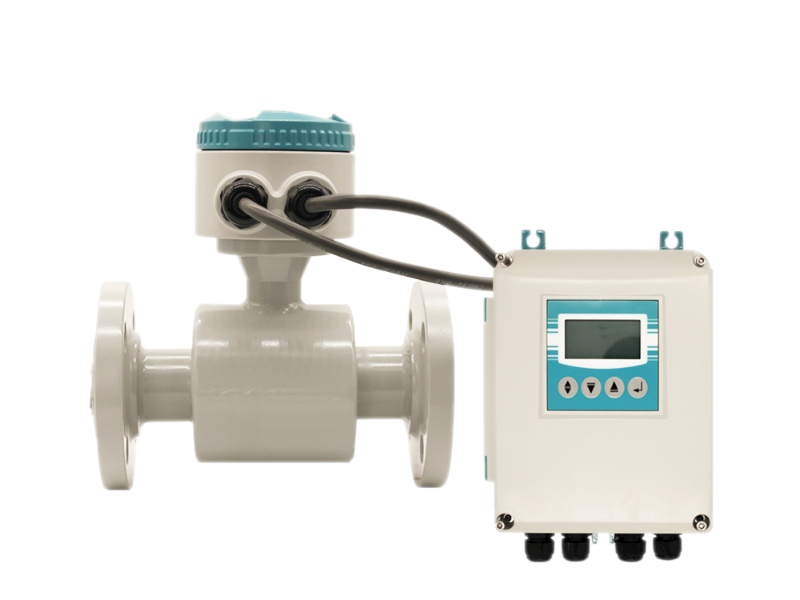BETTER TOUCH BETTER BUSINESS
Contact Sales at KAIDI.
A electromagnetic flow meter is a volumetric flow meter which does not have any moving parts and is ideal for wastewater applications or any dirty liquid which is conductive or water based.
The customized electromagnetic flow meter uses Faraday's Law of electromagnetic induction to measure the process flow.Electromagnetic flowmeters are made up of a transmitter and a sensor. The sensor is placed inline to measure the induced voltage of a fluid as it flows through a pipeline. The transmitter then converts this voltage into a flow measurement. Effectively, the faster the fluid flows, the more voltage is generated.
Magnetic flow meters are used in water treatment plants to measure treated and untreated sewage, process water, water and chemicals. Mining and mineral process industry applications include process water and process slurry flows and heavy media flows.

(i) The obstruction to the flow is almost nil and therefore this type of meters can be used for measuring heavy suspensions, including mud, sewage and wood pulp.
ii) They are not very much affected by upstream flow disturbances.
(iii) There is no pressure head loss in this type of flow meter other than that of the length of straight pipe which the meter occupies.
(iv) They are practically unaffected by variation in density, viscosity, pressure and temperature.
(v) Electric power requirements can be low (15 or 20 W), particularly with pulsed DC types.
(vi) These meters can be used as bidirectional meters.
(vii) The meters are suitable for most acids, bases, water and aqueous solutions because the lining materials selected are not only good electrical insulators but also are corrosion resistant.
(viii) The meters are widely used for slurry services not only because they are obstruction less but also because some of the liners such as polyurethane, neoprene and rubber have good abrasion or erosion resistance.
(ix) They are capable of handling extremely low flows.
Want to know more about electromagnetic flow meter advantages and disadvantages, contact us.
A battery powered electromagnetic flow meter is tested and calibrated in situ by measuring the impedance of the drive coil, and the isolation to ground impedance of the coil and of the flowmeter sensor electrodes. Testing is effected by portable field equipment or by a built-in test equipment facility with the flowmeter transmitter.
When an electrically conductive fluid flows in the pipe, an electrode voltage E is induced between a pair of electrodes placed at right angles to the direction of magnetic field.
The electrode voltage E is directly proportional to the average fluid velocity V.
Noise-supressor against the slurry noise
Kaidi's original Noise-suppression circuit shuts off the slurry noise and achieves stable flow measurement with high accuracy.
Noise-supressor against the slurry noise image.
Divided multi-sampling system using advanced algorithms
Kaidi's original Noise-suppression circuit shuts off the noise induced by slurry or commercial frequency.
It always keeps stable flow measurement with high accuracy.
We are here to help you! If you close the chatbox, you will automatically receive a response from us via email. Please be sure to leave your contact details so that we can better assist